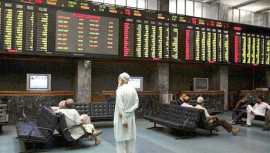
It is necessary to refer to the central premise of the export-led growth, which is natural comparative advantage in terms of international trade provided by coastal regions of a country.
The countries that were conscious of the importance of their coastal cities furnished those with necessary export paraphernalia in the last decades of the 20th Century and let the miracle of export-led growth unfold. This was broadly true up to the last year (2016).
According to David Ricardo (British economist – 1817 AD), who gave the theory of comparative advantage for international trade, it is necessary for a country to specialise in production of an item before it could be profitably exported and the revenues earned could be utilised to import necessary products which the country does not produce but needs them for domestic consumption.
For such specialisation, it is natural to locate such industries around the coastal regions of the country from which exports are rather easy. The entire export story generally revolves around the coastal regions. The present miracle of China is based largely on the continuation of the export-led growth philosophy.
This fact has been recognised in the West and Trump phenomenon has ignited a big debate on the spectacular export success of China, which is based on further opening of the markets under WTO.
However, the secret behind the export success of the country is the location of almost all of its industry along the eastern and southern coasts, which provides it unbeatable advantage in terms of shortest water time for the shipment of goods to USA (only 14 days vs 44 days in case of Pakistan).
Timely shipments
In our case, as 90% of exports go through Karachi, it is still theoretically possible to argue that without effective utilisation of coastal resources, it is not possible to achieve any export-based miracle.
It is now common for big wholesalers and retailers in the export markets to maintain a very lean inventory; this demands timely shipment, which means location of the industry on the coastline and its supporting infrastructure in Karachi.
In order to cater to the spread of the country, the Trade Development Authority of Pakistan (TDAP) has undergone a massive internal restructuring in terms of which 40% of its functions have been shifted to the upcountry to better tap into the location of the industry.
But the role of Karachi as a natural outlet cannot be denied – notwithstanding the fact that the time of export-led growth is over, particularly from the perspective of WTO, which not only opened markets in theory, but also subjected them to a number of rules and disciplines (sanitary and phytosanitary measures) and due to the apprehension of closure of western markets on account of surging nationalistic spirit.
It is another story that China used WTO to achieve spectacular export successes, but we could not do so. Broadly, this could be attributed to the failure to meet compliance needs of the export markets and nature of the economy which is not knowledge-based, but depends on commodity exports, which mean perennially adverse terms of trade.
Ports in Karachi have been badly hit by disturbances in the city, which have inflicted massive damage to exports of the country, not because of the closure of the city, but more so because of a lack of alternative port facilities. This is a strategic failure and could have been thought about decades back. China, India and Indonesia respectively have 100, 30 and over 1,000 sea ports compared to only two ports in Karachi and one in Gwadar, Balochistan.
Summing up, the country’s export failure is not rooted in TDAP or Karachi and its solution could not be sought in Islamabad, unless we address the strategic and monumental failure by making massive use of the national coastline.
Knowledge, skills
One has to realise that Pakistan has to shift to a knowledge and innovation-based economy, where new comparative advantages are created by the country, where the product and the process are rich in terms of knowledge and skills, and provide big value in terms of exports, shifting the terms of trade in our favour.
This aspect is missing from the export structure which continues to be limited to commodities, which do not fetch much value in the export markets, regardless of their location in the country.
This broadly stems from poor education and training system in the country, where the workforce is not capable of being employed in the knowledge industries because of their poor knowledge and skills in basic sciences like mathematics, physics, chemistry and economics.
Therefore, our export failure is in the educational failure, without addressing which the export performance would continue to haunt us. Commodity-based export industry and production does not earn much of the dollar value and will continue to frustrate the ambitions regardless of the sincerity and seriousness of the export-related objectives and dreams.
The writer is the TDAP director general looking after the subjects of research, planning and export facilitation
Published in The Express Tribune, January 30th, 2017.
Like Business on Facebook, follow @TribuneBiz on Twitter to stay informed and join in the conversation.


















COMMENTS
Comments are moderated and generally will be posted if they are on-topic and not abusive.
For more information, please see our Comments FAQ